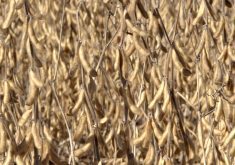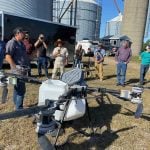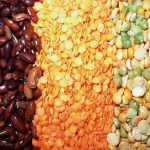MarketsFarm — Although there were no major changes to soybeans in June’s world agriculture supply and demand estimates (WASDE) from the U.S. Department of Agriculture, the commodity’s price shot up on the Chicago Board of Trade.
USDA on Tuesday issued its monthly WASDE report, in which estimated U.S. corn production was lowered by nine per cent, along with an eight per cent reduction in area planted.
“The June (WASDE) report, you typically get cuts for corn. The July report, you get those cuts for soybeans,” said Steve Georgy of Allendale Inc. in McHenry, Ill.
Read Also

U.S. grains: Soybean futures hit one-month high on U.S.-China trade hopes
Chicago Board of Trade soybean futures hit their highest level in a month on Monday on renewed optimism over U.S.-China trade talks after U.S. President Donald Trump said he believed Beijing would agree to a soybean trade deal and will buy U.S. soy again.
USDA indicated in its June report that adjustments will be made for soybeans in the July report. With wet conditions persisting throughout the U.S. Midwest and Plains, farmers were switching from corn to planting soybeans. However, that constant wetness has slowed planting of all crops by a great deal.
“Sixty per cent planted for soybeans and still have 40 to go, with a lot of rain in the forecast in the next couple of weeks,” Georgy added, noting soon it could be too late to plant soybeans.
Even for corn, he expects a further adjustment in a future WASDE report because of the wet conditions that seemingly won’t go away.
One important revision USDA made in its latest report was dropping corn ending stocks by 32.6 per cent, to 42.56 million tonnes. Georgy noted that’s due in part to lower yields expected this year.
Wheat was “neutral” in the report, with only small changes, he said. “Wheat is going to be a follower right now versus a leader.”
The most important thing for wheat right now is trying to get demand to pick up, he said.
— Glen Hallick writes for MarketsFarm, a Glacier FarmMedia division specializing in grain and commodity market analysis and reporting.














